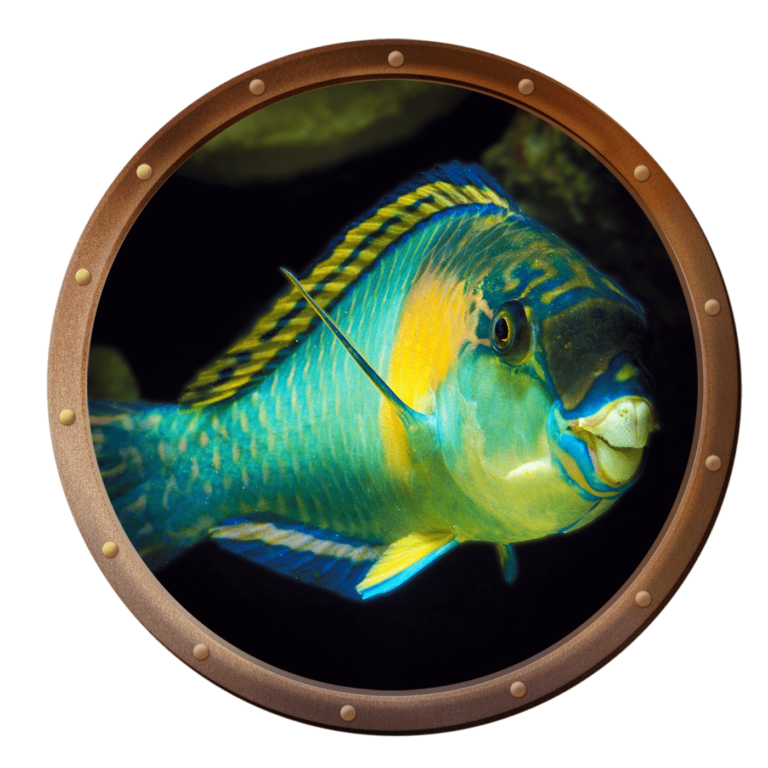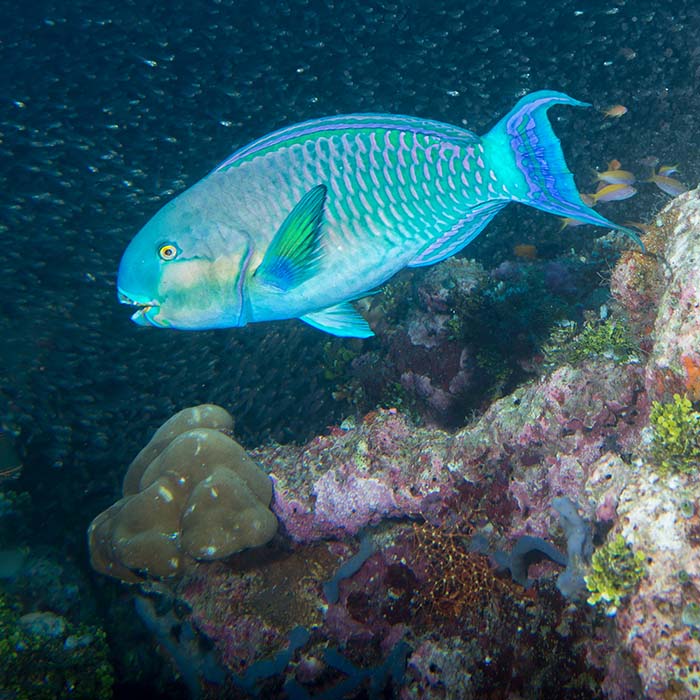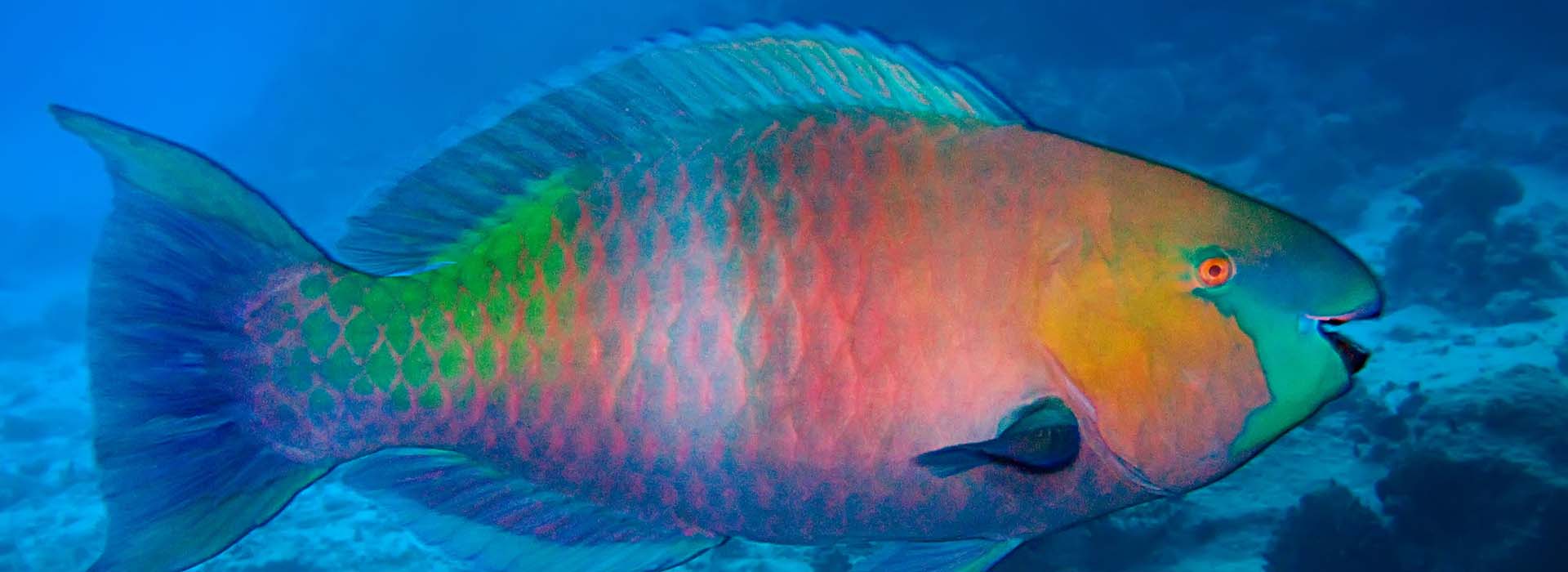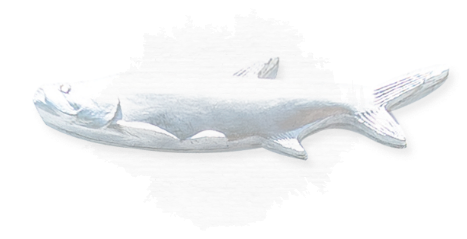Do you like going to the beach, sunbathing and playing in the sand? Have you ever wondered if the sand under your feet is natural to the area? I’m pleased to inform you that a percentage of the sandy beaches of the Florida Keys are all-natural, recycled excrement of the beautiful locally fed parrotfish. That’s right, excrement!
Parrotfish received their name from having a fused beak structure — like a parrot! A parrotfish’s diet is primarily algae. To eat, they use their beak to pulverize coral to reach the algae-filled polyps hiding in the coral reefs. Sand is ground-up, undigested remains of coral. So, thanks to parrotfish, we can have sand on the seafloor, sandbars and beaches.
Another reason the name parrotfish is so fitting for the marine animal (closely related to wrasses) is that they are very colorful, like parrots. There are several different types of parrotfish — the Key West Aquarium houses rainbow parrotfish and midnight parrotfish.

Like wrasses, parrotfish use their pectoral fins to swim. Occasionally, they use their tail fin for speed. The largest member of the parrotfish family is the bumphead parrotfish, found in the Indo-Pacific. It measures more than 4 feet and can reach a weight of 100 pounds. The average size for the 80 identified species of parrotfish is 1 to 4 feet, and they can live up to seven years.
Parrotfish can be spotted either by their unique coloring or by the clouds of waste that trail behind them as they swim.
You won’t find many places in the United States that serve parrotfish, but some places in the world, like Polynesia, will consider it a delicacy. In Polynesia, parrotfish was once considered “royal food” and only eaten by the king.
Choosing which characteristic is most remarkable is a difficult task. What feature sticks out most to you?


